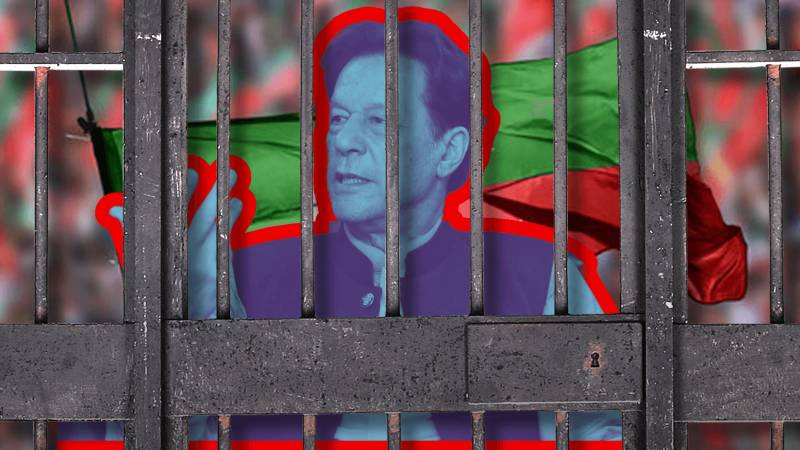Arshad Mahmood Malik
Youm-e-Takbeer, a day that marks the successful nuclear tests conducted by Pakistan on May 28, 1998. This day, known as Youm-e-Takbeer, is celebrated as a significant milestone in the country’s history, symbolizing [provide a brief historical and cultural context of Youm-e-Takbeer].
As Pakistan commemorates Youm-e-Takbeer on May 28, a day that marks a significant milestone in the country’s history, it becomes crucial to reflect on the implications of its nuclear achievements. These successes, when channelled towards comprehensive national development, hold the potential to inspire hope and optimism for a brighter future. The attainment of nuclear weapons and full spectrum deterrence indeed stands as a remarkable feat, effectively countering asymmetries in conventional forces and external threats, particularly from neighbouring India. Undoubtedly, this achievement has played a pivotal role in ensuring peace and security within the region.
However, amidst the celebration of nuclear prowess, it is imperative to acknowledge the pressing challenges that persist within Pakistan’s socio-economic landscape. The urgency of these challenges, despite the advancements in nuclear capabilities, should invoke a sense of responsibility and motivate action. The country continues to grapple with profound issues related to national cohesion, economic development, and poverty alleviation. It is evident that the dividends of nuclear advancement have not been effectively translated into establishing a robust socio-economic foundation. Pakistan, as a nuclear state, lags behind in building a thriving industrial base and fostering export-oriented manufacturing capabilities, which are essential for sustainable economic growth and poverty reduction.
The persistent lack of industrialization has perpetuated economic disparities, widespread poverty, and a dearth of essential civic amenities for a significant portion of the population. However, the potential of industrial development to alleviate poverty and promote inclusive growth should invoke a sense of possibility and optimism. With over half of the populace living below the poverty line of $3 a day, the urgent need for inclusive growth, wealth generation, and poverty alleviation through industrialization becomes glaringly evident. Moreover, addressing the trade imbalance, soaring inflation, energy shortfall, and the burden of circular debt and balance of payments crisis necessitate a fundamental shift towards industrial development.
The statistical discrepancies further underscore the critical need for a comprehensive industrial strategy. For instance, in [Country A], manufacturing accounts for a significant 51% of the GDP, while in [Country B], agriculture contributes 19% of the GDP despite employing 43% of the workforce. These examples highlight how other nuclear states have successfully balanced their nuclear achievements with industrial development, providing a potential path for Pakistan. Additionally, the energy shortfall of over 7000MW, coupled with the region’s most expensive electricity production, poses significant hurdles to sustainable growth and competitiveness.
Furthermore, the prevailing governance structure, characterized by a lack of fiscal discipline, reluctance to address the privileges of the elite, and a regressive taxation regime, has further exacerbated the economic challenges. The failure to pursue essential reforms and prioritize revenue generation from untapped sources has perpetuated the burden on the middle class and small-scale businesses, reflecting a critical need for a more equitable and sustainable economic framework.
In light of these challenges, it is imperative to question why the remarkable determination and resilience displayed in fortifying Pakistan’s nuclear capabilities have not been equally channelled towards building a robust industrial base and fostering economic prosperity. The abundance of natural resources, strategic geographic positioning, raw materials, and a youthful demographic dividend present ample opportunities for industrial development. However, the existing governance structure and national psyche pose significant barriers to realizing this potential. In this context, international partnerships, such as [provide examples of potential international partnerships], can play a crucial role in overcoming these barriers and accelerating Pakistan’s development trajectory.
As we commemorate Youm-e-Takbeer, it becomes essential to draw parallels with other nations and acknowledge the transformative potential that lies within Pakistan. By embracing a resilient and assertive national identity, Pakistan can harness its potential to emerge as an industrialized and progressive power, transcending the existing economic challenges and fostering inclusive growth. This shift towards industrial development holds the promise of [provide a brief discussion on the potential benefits of industrial development], which can significantly improve the socio-economic conditions of the country. This calls for a collective commitment to sovereignty, equality, and the rule of law, essential elements in overcoming the prevailing crisis of governance and steering the nation towards a prosperous future.
Therefore, the commemoration of Youm-e-Takbeer serves as a poignant reminder of the imperative shift from nuclear prowess to comprehensive industrial development. By leveraging its nuclear achievements as a catalyst for economic progress and inclusive growth, Pakistan can transcend the existing challenges and emerge as a resilient and prosperous nation. However, it is important to note that this shift has its risks and challenges, such as [provide a brief discussion of potential risks and challenges], which need to be carefully considered and addressed in the process.

















